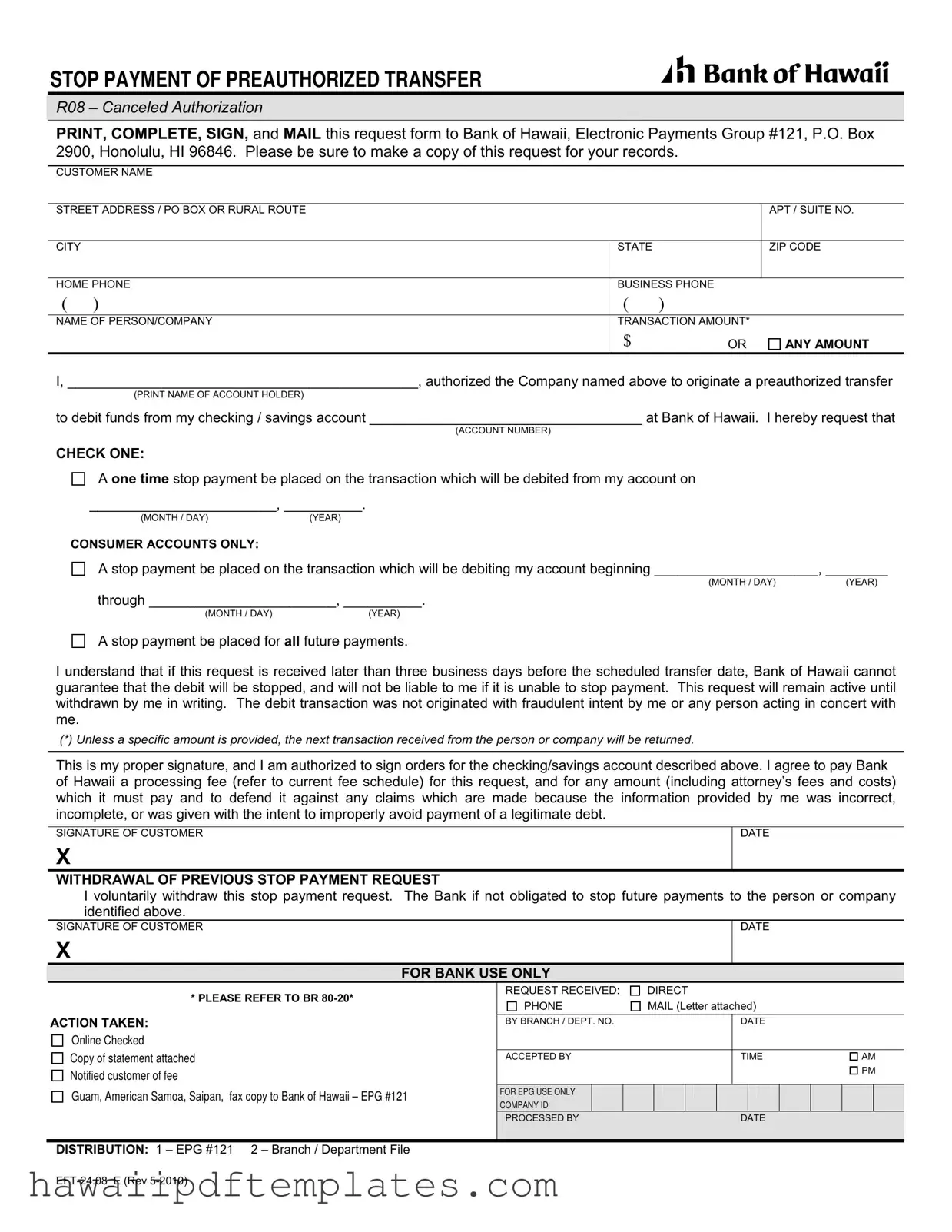Eft 24 08 E PDF Form
The EFT 24 08 E form is a request used to stop the payment of preauthorized transfers from your bank account. This form allows customers to cancel an authorization for future debits, ensuring that no further transactions occur without their consent. To initiate this process, complete the form and mail it to Bank of Hawaii's Electronic Payments Group.
Ready to take control of your finances? Fill out the form by clicking the button below.
Customize Form Online
